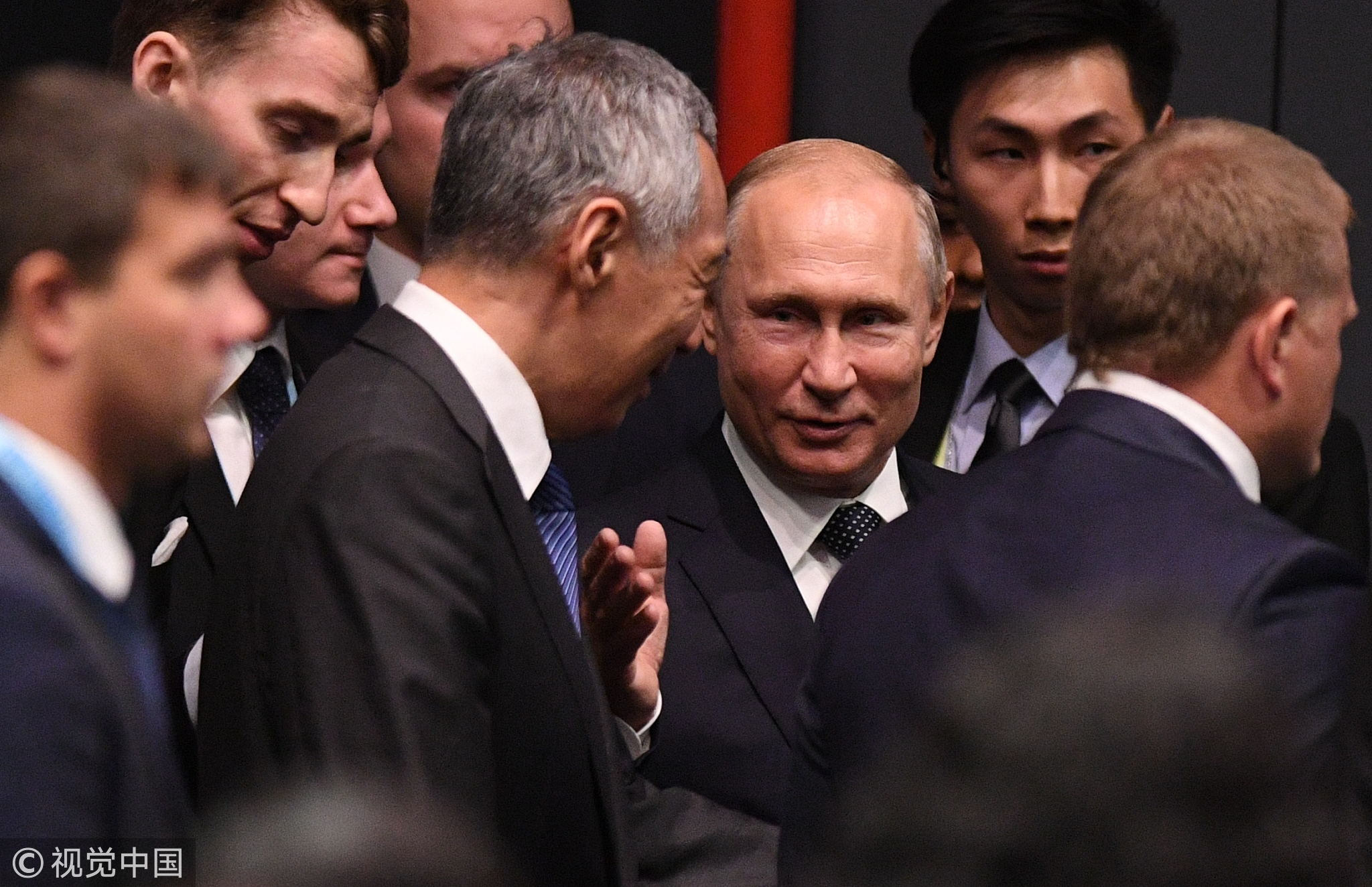
Opinions
12:12, 15-Nov-2018
Opinion: New prospects for East Asian cooperation
Updated
12:06, 18-Nov-2018
Cao Qun

Editor’s note: Dr. Cao Qun is a researcher with the Center for Maritime Security and Cooperation at the China Institute of International Studies (CIIS). The article reflects the author's opinion, and not necessarily the views of CGTN.
The 13th East Asia Summit (EAS) is being held in Singapore on November 14-15, 2018. The EAS is an annual forum of national leaders from the Asia-Pacific region, which currently contains 18 attending countries - the 10 Association of Southeast Asian Nations (ASEAN) countries along with Australia, China, India, Japan, New Zealand, South Korea, the US and Russia.
Prior to attending the 13th EAS, Chinese Premier Li Keqiang declared China's hope to finalize negotiations on the Regional Comprehensive Economic Partnership (RCEP) in 2019 and finish consultation of the Code of Conduct (COC) in the South China Sea within three years.
EAS focuses on cooperation
The idea of an East Asia Grouping was first promoted in 1991 by then Malaysian Prime Minister Mahathir Mohamad. The first EAS meeting was held in Kuala Lumpur, Malaysia, on December 14, 2005.
Since its establishment, ASEAN has held the central role in the EAS. EAS meetings are held after the annual ASEAN leaders' meetings, and with its commitment to regional development, security and stability, it has grown into an important platform for dialogue and cooperation for countries from within and outside the region.
China, as a founding member, has participated in all the past summits, and endorses regional cooperation in all of the six priority areas: Environment and Energy, Education, Finance, Global Health Issues and Pandemic Diseases, Natural Disaster Management, and ASEAN Connectivity. In the last summit (12th EAS), maritime cooperation was identified as a new area of cooperation. China upholds ASEAN centrality, maintains advancing economic development and political and security cooperation in parallel, and is ready to set up maritime dialogue and cooperation with other parties under the EAS framework.

Singapore's Prime Minister Lee Hsien Loong speaks at a business forum on the sidelines of the 33rd Association of Southeast Asian Nations (ASEAN) Summit in Singapore, on November 12, 2018. /VCG Photo
Singapore's Prime Minister Lee Hsien Loong speaks at a business forum on the sidelines of the 33rd Association of Southeast Asian Nations (ASEAN) Summit in Singapore, on November 12, 2018. /VCG Photo
RCEP – a stronger boost to free trade and regional integration
RCEP is a proposed free trade agreement between the ASEAN's 10 member states and the six Asia-Pacific states (Australia, China, India, Japan, South Korea and New Zealand) with which ASEAN has existing free trade agreements.
While the global economy and geopolitical conditions are facing complexity and increasing uncertainty, RCEP will be a stronger boost to free trade and regional integration, if it can bear fruit.
China has all along supported speeding up regional integration, which was reiterated by Premier Li in his speech at the 44th Singapore Lecture in the Southeast Asian city-state. RCEP, which covers nearly half the world's population and one-third of global trade, has made substantial progress in its negotiations this year.
The mechanism is based on World Trade Organization rules and is beneficial to regional economic integration, and China hopes to finalize RCEP negotiations in 2019 to reach a high-level and mutually beneficial free trade pact, Premier Li said.
More hope for peace and stability in the South China Sea

Russian President Vladimir Putin talks to Singaporean Prime Minister Lee Hsien Loong before the ASEAN-Russia Summit in Singapore, November 14, 2018. /VCG Photo
Russian President Vladimir Putin talks to Singaporean Prime Minister Lee Hsien Loong before the ASEAN-Russia Summit in Singapore, November 14, 2018. /VCG Photo
The South China Sea issue has been a hot topic in the recent summits and caused concern in some countries outside the region. The current situation in the South China Sea is stabilizing, and relevant countries have made progress in improving their relations.
China has made positive efforts to promote maritime cooperation in the region, which is being advanced between relevant parties in a number of aspects, such as naval exercises, coast guard training, search and rescue.
Contrary to the suspicion from a few foreign observers, the COC consultation is not a delaying tactic of the Chinese side, and China has been actively promoting the consultation on the COC to reach an agreement at an early date on the basis of consensus.
Thanks to the stabilized situation in the South China Sea, China and ASEAN member states adopted a framework for the COC in August 2017 and formulated the single draft negotiating text of the COC in August 2018.
"The single draft negotiating text is not merely a technical term, but an indication that China and ASEAN have reached consensus on ensuring peace and stability, freedom of overflight and navigation in the South China Sea,” Premier Li said. Pending the settlement of disputes related to territorial sovereignty and maritime delimitation issues in the South China Sea, the COC would help the parties in practical maritime cooperation, promotion of trust and confidence, prevention of incidents and management of incidents.
Although the COC could not settle territorial and maritime delimitation disputes, it would be helpful for maintaining peace and stability in the South China Sea. And reaching agreement on the COC will not only be beneficial to China and ASEAN member states, but also conducive to free trade, which is in the interest of all sides.
(If you want to contribute and have specific expertise, please contact us at opinions@cgtn.com.)

SITEMAP
Copyright © 2018 CGTN. Beijing ICP prepared NO.16065310-3
Copyright © 2018 CGTN. Beijing ICP prepared NO.16065310-3